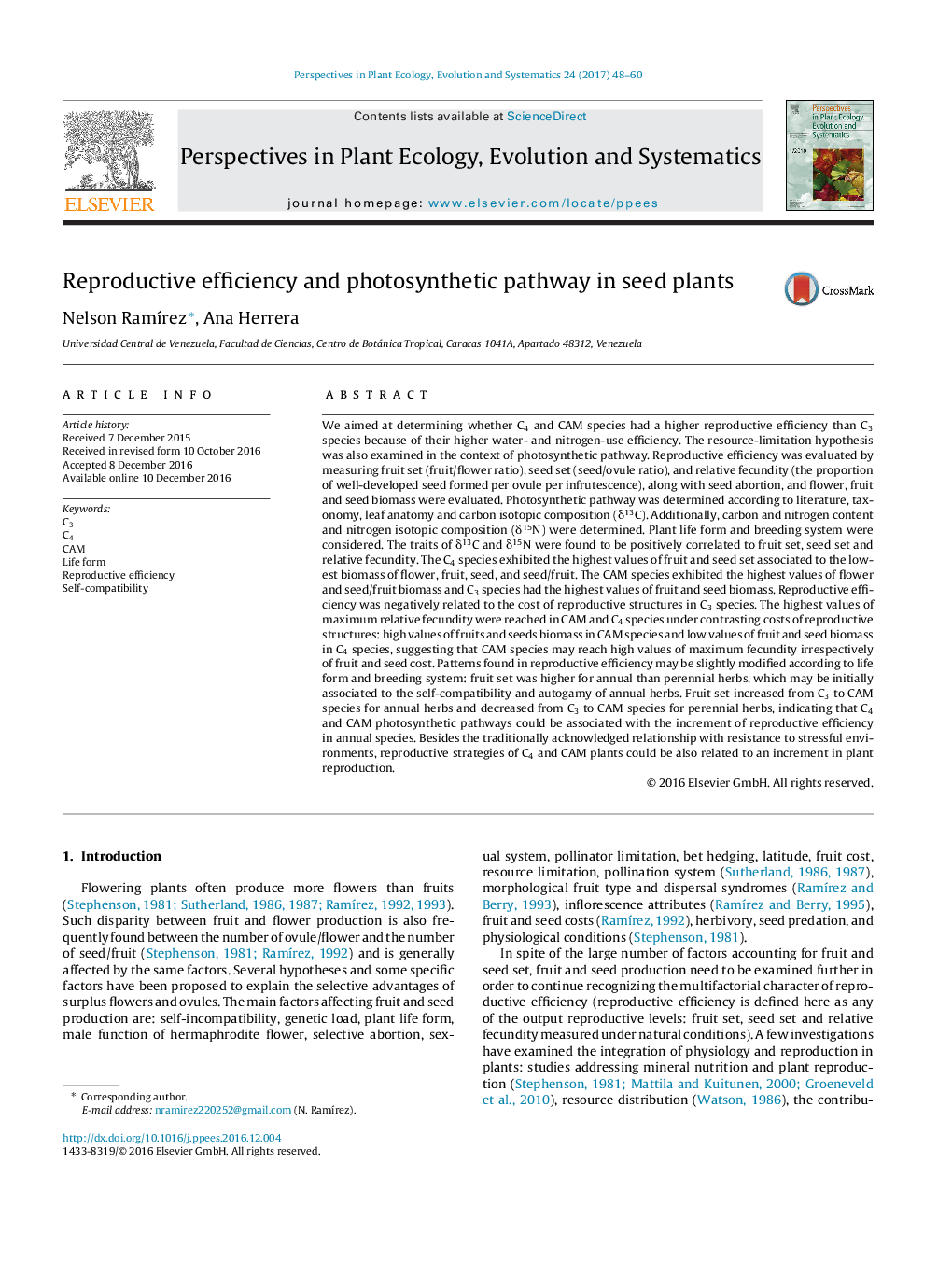| کد مقاله | کد نشریه | سال انتشار | مقاله انگلیسی | نسخه تمام متن |
|---|---|---|---|---|
| 5744981 | 1618596 | 2017 | 13 صفحه PDF | دانلود رایگان |
- This research evaluates whether C4 and CAM species have a higher reproductive efficiency than C3 species because of their higher water-use efficiency.
- The C4 species exhibited the highest values of fruit and seed set associated to the lowest biomass of flower, fruit, seed, and seed/fruit.
- d13C and d15N were positively correlated to reproductive efficiency (fruit set, seed set and relative fecundity).
- Mating systems and life form may also differentially influence the reproductive efficiency according to photosynthetic pathway.
We aimed at determining whether C4 and CAM species had a higher reproductive efficiency than C3 species because of their higher water- and nitrogen-use efficiency. The resource-limitation hypothesis was also examined in the context of photosynthetic pathway. Reproductive efficiency was evaluated by measuring fruit set (fruit/flower ratio), seed set (seed/ovule ratio), and relative fecundity (the proportion of well-developed seed formed per ovule per infrutescence), along with seed abortion, and flower, fruit and seed biomass were evaluated. Photosynthetic pathway was determined according to literature, taxonomy, leaf anatomy and carbon isotopic composition (δ13C). Additionally, carbon and nitrogen content and nitrogen isotopic composition (δ15N) were determined. Plant life form and breeding system were considered. The traits of δ13C and δ15N were found to be positively correlated to fruit set, seed set and relative fecundity. The C4 species exhibited the highest values of fruit and seed set associated to the lowest biomass of flower, fruit, seed, and seed/fruit. The CAM species exhibited the highest values of flower and seed/fruit biomass and C3 species had the highest values of fruit and seed biomass. Reproductive efficiency was negatively related to the cost of reproductive structures in C3 species. The highest values of maximum relative fecundity were reached in CAM and C4 species under contrasting costs of reproductive structures: high values of fruits and seeds biomass in CAM species and low values of fruit and seed biomass in C4 species, suggesting that CAM species may reach high values of maximum fecundity irrespectively of fruit and seed cost. Patterns found in reproductive efficiency may be slightly modified according to life form and breeding system: fruit set was higher for annual than perennial herbs, which may be initially associated to the self-compatibility and autogamy of annual herbs. Fruit set increased from C3 to CAM species for annual herbs and decreased from C3 to CAM species for perennial herbs, indicating that C4 and CAM photosynthetic pathways could be associated with the increment of reproductive efficiency in annual species. Besides the traditionally acknowledged relationship with resistance to stressful environments, reproductive strategies of C4 and CAM plants could be also related to an increment in plant reproduction.
Journal: Perspectives in Plant Ecology, Evolution and Systematics - Volume 24, February 2017, Pages 48-60
